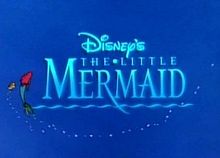
Mermaid Adventures by Eloy Lasanta is a family-friendly game where you play a group of merfolk having adventures. Have you ever wanted to seek out sunken treasure under the sea, make friends with mythical sea-creatures or use the magic of a sea witch to walk on land for the first time? Then Mermaid Adventures is for you!
I picked this game up in a Bundle of Holding specifically crafted around family-friendly games. I probably wouldn’t have paid it much attention if I didn’t have a friend who I desperately want to run more games for and who really loves mermaids, so I thought I’d give it a look.
One thing that is noticeable (though it really shouldn’t be unusual in this day and age) is that Mermaid Adventures is relatively diverse. The artwork covers people of different skintones and genders, which is lovely to see, especially in a game designed for kids. It’d be nice to have a wider range of bodytypes, but I’m going to be happy for what they did include. It makes sense that in a game where they can play a magical half-octopus half-human, they can play any kind of character they want. I found the pictures of what I assume to be Kickstarter backers painted as sample characters slightly creepy and uncanny valley-ish, but it’s a fairly common reward tier these days, and it’s a tiny part of the book.
Mermaid Adventures prides itself on being fairly simple to pick up, like many family-friendly rpgs. This isn’t as simple as say, Do: the Pilgrims of the Flying Temple, but it is relatively quick to pick up, and there are suggestions of how to guide younger people or people who aren’t as experienced at roleplaying through the choices you make to create your character. Your character has a rating in one of the four attributes (Body, Mind, Charm and Luck) and you roll that many white dice plus up to +3 dice’ worth of bonuses from assistance, qualities or circumstances. The Navigator (GM) rolls a number of black dice equal to the difficulty of the challenge based on a simple table, and success is a 4, 5 or 6. If the white dice get more successes, the player wins, if the black do, the Navigator wins. Ties mean that the player gets a qualified success, with a consequence or complication. Not revolutionary, but clearly leading to a fairly high level of success – gritty simulationism this ain’t. However, if you’re coming to an adorable family-friendly mermaid game looking for realism…uh…good luck? I don’t know why you’d do that.
The character creation is speedy and simple, with random tables for hair colour and the stuff your character has. The characters don’t have to be mermaids, and in fact there are a number of different kinds of merfolk, from the awesome Sharkfolk to the slightly silly Urchinfolk, all with their own cultural strengths. That said, there is quite a lot of danger of cross-over, as for instance, it is a little difficult to tell the difference between what the Jellyfolk and the Urchinfolk ‘thing’ is, and the Fishfolk ‘thing’ seems to encompass a lot! However, it would be hard to have too much overlap in skill, as there are quite a few qualities, which define your character beyond their attributes. Animal companions and magic come under qualities as well, so a magic user is going to be pretty specialised, but the limited attributes mean there are going to be things they’re naturally good at without talents. Plus, of course, there are plenty of flavourful qualities that can add a bit of character.

If you ever wanted to play this TV series as an RPG…
The one thing that I couldn’t see an explanation for was how the ‘negative’ qualities work. They give disadvantages to the character, but I couldn’t see anything in the text about what advantage could be gained by taking them to balance that out. I assume that you’d have another point to spend on qualities. While the list of qualities is a little limited, it’s extremely easy to come up with new ones, as most will add a small bonus to a particular application of an attribute. I could see how it would be easier to stack some qualities (such as the weapon ones) together, but then there is a hard limit of +3 from qualities, and it would also be harder to benefit from team work. I should probably note that this might have been explained somewhere, but as I didn’t realise its absence until I was skimming through for this review and therefore wasn’t looking for it when I read in depth, I may have missed it.
The adventures at the end of the book are clearly designed to be quick, and would probably not be meaty enough for adult roleplayers, but this game isn’t really designed for adults. That’s not going to stop me from running it for my adult friends, of course, but I would probably come up with my own adventures or add a lot of extra stuff into the scenarios provided. There is a decent amount of setting information to provide inspiration for a few sessions, but since this is meant to be quite lightweight, a campaign would probably require a bit more fleshing out of the setting.
In conclusion: this is a charming RPG with good accessibility for children, and a wide variety of characters that can be played without the need for too much mechanical talk. I think it’s well worth a look if you’d like to run fantastical undersea adventures which, let’s face it, isn’t a genre exactly overburdened with RPGs right now.
